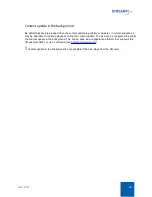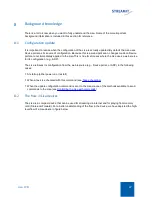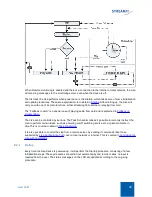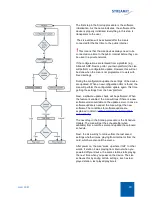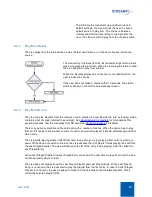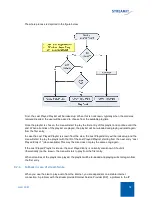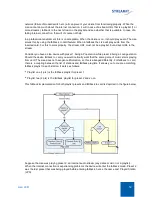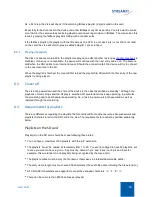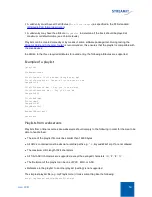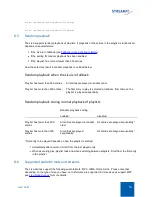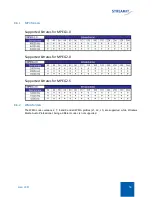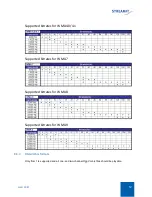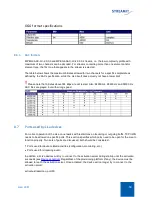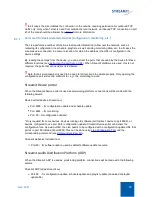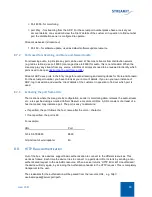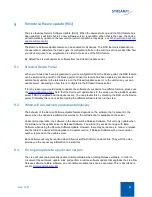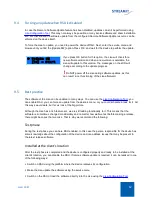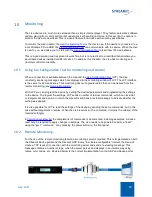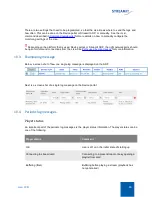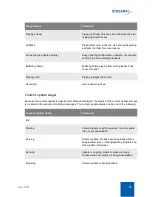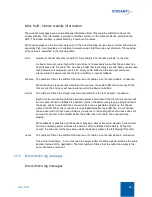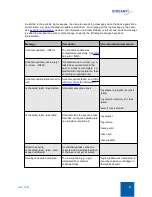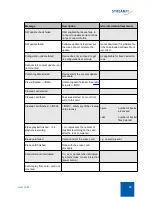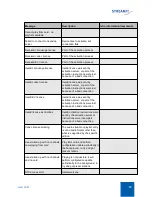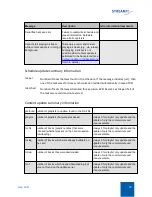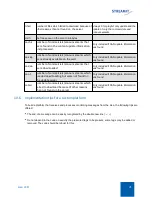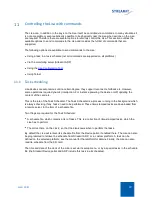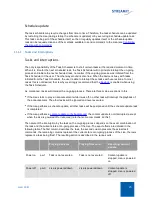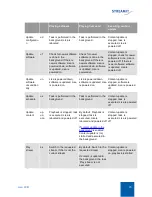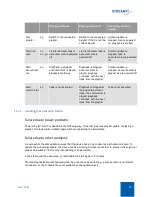
Lisa LCD
60
Port 8099 - for monitoring
port 87xy - for streaming from the ADP. For the actual port number please have a look at your
account details, or as an admin view the 'client' details of the customer in question to find out what
port the distribution server is configured to operate.
Streamit webserver (streamit.eu)
Port 80 – for software update, used as default software update resource
8.7.2
Ports used for streaming and Store-and-Forward audio
For streaming audio, in principle any port can be used. While most streams from distribution servers
(e.g. radio stations) use port 8000 (or a range close to 8000) for audio, this is not standard. When the
Lisa may play any stream from any source, all URLs of all presets need to be reviewed to identify which
ports need to be open (
Extracting the port from a URL
).
Streamit ADP uses ports in the 87xy range for audio streaming and serving tracks for Store-and-Forward.
For the actual port number, you have to look at your account details. If you run your own instance of
ADP, log in as admin and view the 'client' details of the customer in question to find out which port is
used.
8.7.3
Extracting the port from a URL
The locations where the Lisa gets its configuration, sends its monitoring data, retrieves the audio stream,
etc., are specified using so-called Uniform Resource Locators or URLs. A URL consists of at least of a
host name and may indicate a port. The port is easy to determine:
If specified, the port follows the host name after the colon : character
If not specified, the port is 80
For example:
URL
Port
123.45.6.78:8890
8890
http://streamit.eu/sirupdate/
80
8.8
HTTP Basic Authentication
Out of the box, Lisa devices support basic authentication to connect to the different resources. This
works as follows: Each time the device tries to connect to a particular URL, it starts by sending a non-
authenticated request to the web-URL resource. When a server returns “HTTP Error 401 Unauthorized”,
the device will retry again, by including the Authorization header in the HTTP request. This is completely
transparent to the user.
The credentials for the authorization will be parsed from the resource URL , e.g. http://
username:pass@server:port/path.

